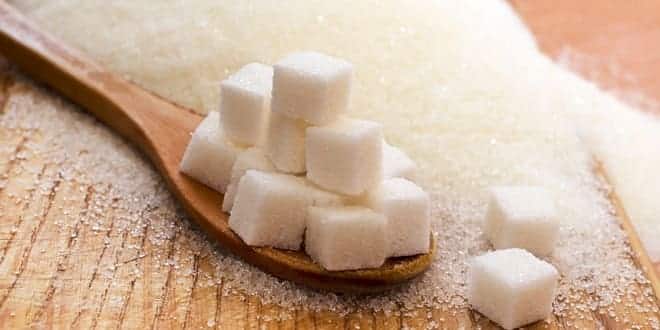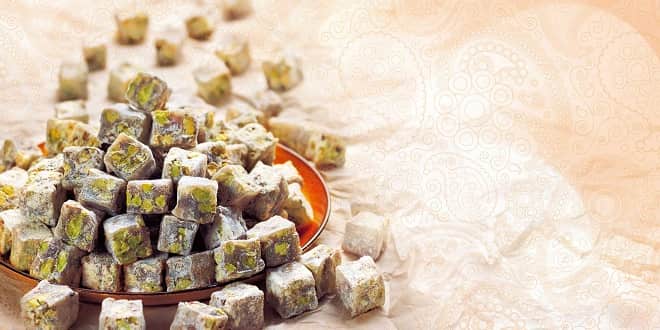Wheat Starch
FE 477 DESIGN PROJECT
BİDÜNYA
WHEAT STARCH
Introduction
PRODUCTION CAPACITY OF STARCH:
600 kg/hour
AREA OF PLANT:
7000 m2 (closed:4000 m2,open:3000 m2)
ENERGY SOURCE:
Electricity, Natural gas
WATER REQUIREMENT:
Public Water, Well water
NUMBER OF EMPLOYEES:
74
OPERATION TIME:
320 day / year 3 shift for starch
MARKET OF THE PRODUCT:
Company will sale its product to the domestic markets and export to the Middle East and European Country
ORGANIZATION SCHEME OF THE COMPANY
Information About Wheat
-
Wheat is an agricultural cereal product harvested since ancient ages. There are 14 types of wheat available on the world but only 3 types of them are appropriate to handle in industry. These are:
-
Triticum aestivum
-
Triticum compactum
-
Triticum turgidum
STATISTICS OF WHEAT FOR TURKEY
STARCH
Starch is a white, granular or powdery, odourless, tasteless, complex carbohydrate,abundant in the seeds of cereal plants and in bulbs and tubers.
Starch molecules are of two kinds. In the first kind, amylose which constitutes about 20-25 percent of ordinary starch, the C6H10O5 groups are arranged in a continuous but curled chain somewhat like a coil of rope; in the second kind, amylopectin considerable side-branching of the molecule occurs.
PLANT LOCATION
FINAL COMMENTS AND DECISION
Raw material availability because of very closed Konya
Easy transportation of raw material and to other place
Energy requirement is easy due to natural gas
Price of region is free due to supported government
There is not much competition in production of starch
So, Karaman is the best one
SITE LAYOUT
PLANT LAYOUT
PROCESS LAYOUT
Process
Cleaning Section
Flow Chart of cleaning section
Sieve
Aspirator-Cyclone
Magnetic Seperator
Destoner
Seed Seperator
Storage
Processing Section
Flow Chart of processing section
Process Flow Diagram
Debranning
Hydrating
Wet Milling
Germ Seperation
Fibre Seperation
Gluten Seperation
Refining
Rotary Vacuum Filter
Drum Dryer
Packaging
QUALITY CONTROL
STRUCTURE OF WHEAT KERNEL
Mainly wheat is constituted of;
Bran(16-17% of kernel)
Germ (2% of kernel)
Endosperm(81-82% of kernel)
And starch presents in endosperm part.
Starch content of endosperm is about 80%.
CRITERIA OF WHEAT QUALITY
1.PHYSICAL CHARACTERISTICS
Test weight
Damaged kernel
Impurities
Milling quality
Kernel weight
Kernel size and shape
Kernel hardness
Vitreousness
Color
1.1.TEST WEIGHT
Test weight is expressed in kilograms per unit volume (or hectoliter).
This affects the starch yield.
Weight of 100 ml wheat must be at least 80 gr.
1.2. KERNEL WEIGHT
Kernel weight is usually expressed in gram per 1000 kernels.
This is a function of kernel size and kernel density.
Durum wheat normally range from 30-40 grams per 1000 kernels.
1.3. KERNEL SIZE AND SHAPE
Kernel size is closely related with kernel weight.
This also affects the starch yield.
Small wheat kernels are seperated from larger ones by sieving and milling.Two fractions separately may increase efficiency in milling operation.
1.4. KERNEL HARDNESS
Kernel hardness is associated with high protein content.
Durum wheat kernel is harder than hard wheat.
İf hardness increase , protein content also increase.
1.5. VITREOUSNESS
It is associated with kernel hardness.
And also it gives some information about storage conditions.
1.6. COLOR
Wheat is classed either red or white, depending on the color of bran.
Durum wheat must be amber in appearance.
1.7. DAMAGED KERNEL
Wheat may be damaged in the field before harvesting or during harvesting, storage,handling.
Damaged kernel decreases starch yield.
1.8. IMPURITIES
The quantity and character of impurities or extraneous matter in wheat are obviously important criteria of quality.
İt also effects net amount of clean wheat.
1.9. MILLING QUALITY
It shows that wheat is milled easily or not.
If milling is difficult,cost of production increase,quality decrease.
2.CHEMICAL CHARACTERISTICS
2.1. MOISTURE CONTENT(12.5%)
It is important for wheat due to;
Economical cost,
Keeping quality,
Growth of microorganisms,
Storage,
Deterioration of wheat.
2.2. PROTEIN CONTENT
It is important for nutrient value of food.
Protein content of starch is estimated from the determined nitrogen content,using conversion factor.
The protein content of wheat ranges about from 6% to about 20%,depending in part on variety and class and on environtment conditions during growth.
2.3. PROTEIN QUALITY
This is related to gluten portion of wheat.
These affects stickness,extensibility,elasticity,strength.
2.4.α-AMYLASE ACTIVITY
It is measured by meaning maltose amount.
If α-amylase activity increases,then maltose amount increases.
Maltose is nutrient for microorganisms,this means of occuring good fermentation.
2.5.CRUDE FIBER(2.0-2.7%) AND ASH(1.4-2.0%)
Both of them are related with amount of bran.
Amount of inorganic substance affects the ash content.
QUALITY ANALYSIS OF WHEAT STARCH
1.Sensory analysis
2.Physical analysis
3.Chemical analysis
4.Microbiological analysis
1. SENSORY ANALYSIS
Starch;
Should be powder,
Should be white color,
Should be homogen structure,
Should have specific taste and odor,
Should not have rancidity.
2. PHYSICAL ANALYSIS
Particle size should be less than 150 micrometers.
The amount of starch particle remaining on the top of sieve should not be greater than 1% (m/m) when starch is sieved with a 150 micrometer sieve.
3.CHEMICAL ANALYSIS
3.1. SO2 ANALYSIS
Sulfur dioxide is released from the sample by heating in dilute acid and it is removed by sweeping with an inert gas such as carbon dioxide or nitrogen.
Sulfur dioxide in foods is sometimes determined by titrating the product extract with iodine and colorimetrically.
Maximum SO2 in dry starch should be 0,01%.
3.2. ACIDITY
Amount of 10 N NaOH used to determine acidity should be max. 2 ml / 100 gr.
This is determined by titration of a pasted sample or the filtrate from a sample slurry.
3.3. ASH CONTENT
Inorganic compound nondissolving in 10% HCl should be max. 0,1% by m/m.
All starches from cereal contain minor or trace quantities of uncombined inorganic materials.
Ash determination is practiced to control the concentration of inorganic salts, and to measure the concentration of salts remaining after derivatization reactions.
3.4. PROTEIN CONTENT
And total protein content should not be greater than 1% m/m.
Protein contents of starch are estimated from the determined nitrogen content, using conversion factor.
This conversion factor is 5.7 for wheat starch.
3.5. MOISTURE CONTENT
It should be less than 13% m/m.
Moisture content of starch is most commonly determined by drying to constant weight in a vacuum oven at 100 °c-200 °c.
In order to determine the moisture content oven drying or Karl Fischer method is used most commonly.
4. MICROBIOLOGICAL ANALYSIS
Cost Estimation
Depreciation=(V-Vs)/n
V:the cost of purchased equipment($1,300,000)
+Auxulary Equipment 373.500
Vs:the salvage value of equipment($ 300,000)
n:service life of equipment(10 year)
Depreciation:($ 1,673,500 -300,000)/10year=
$137,350 per year
FEASIBLE or NOT ?
In Garanti Bank and Iş Bank annual interest=16.5%
According to this information in 10 year period
-
this project is not feasible because if we deposit 4,754,000$
-
to the bank we will withdraw 12,598,100$
Thank You
…




